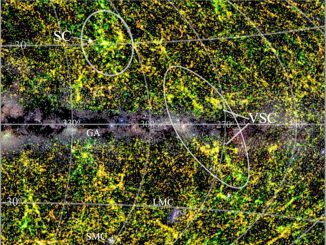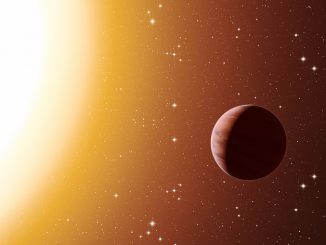
Major supercluster of galaxies found hidden by the Milky Way
An international team of astronomers has discovered a previously unknown major concentration of galaxies in the constellation Vela, which they have dubbed the Vela supercluster. The gravitational attraction from this large mass concentration in our cosmic neighbourhood may have an important effect on the motion of our Local Group of galaxies.


